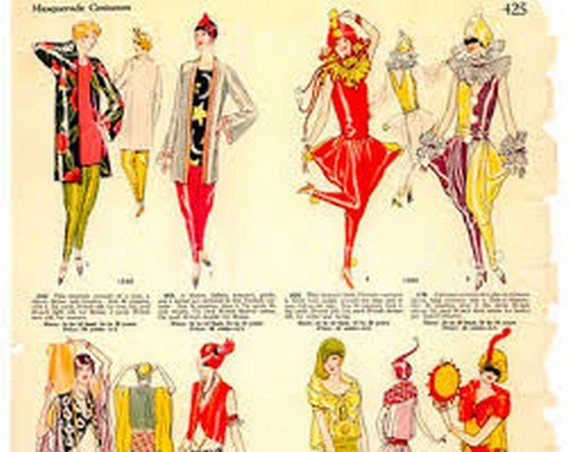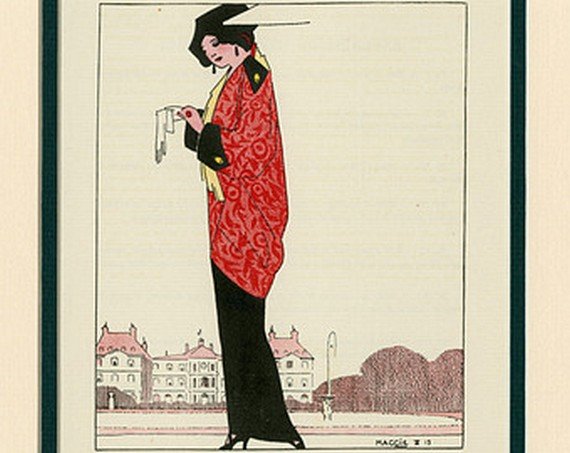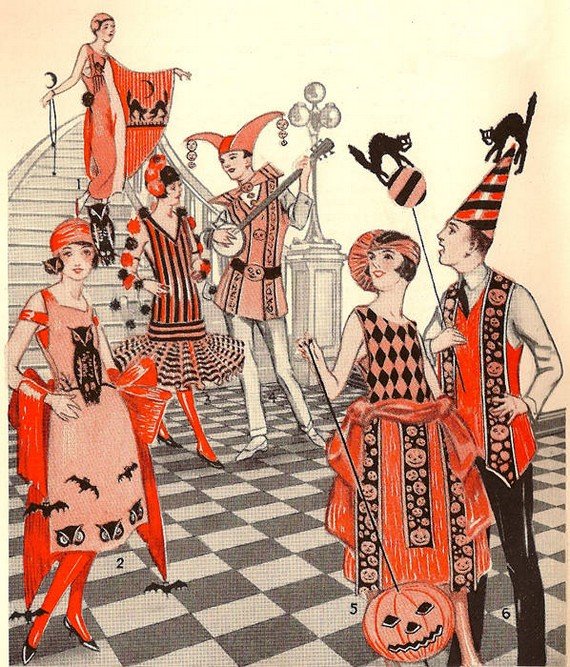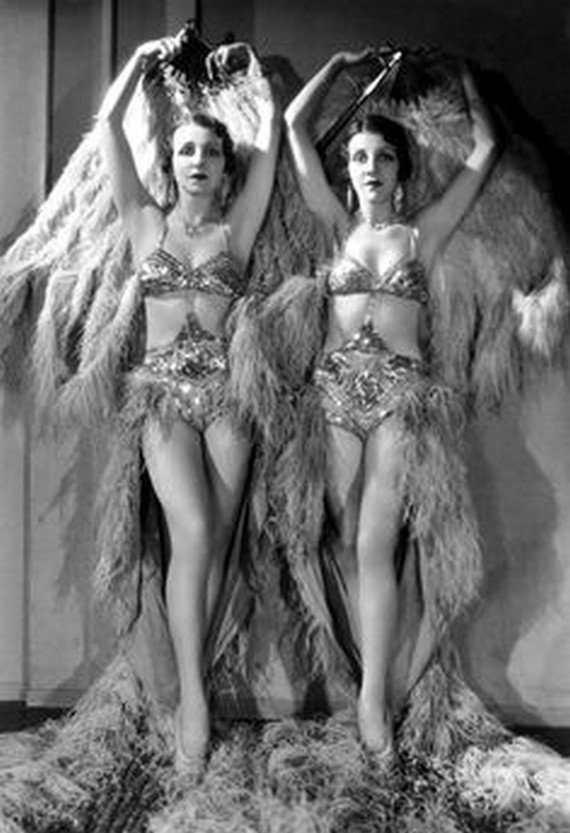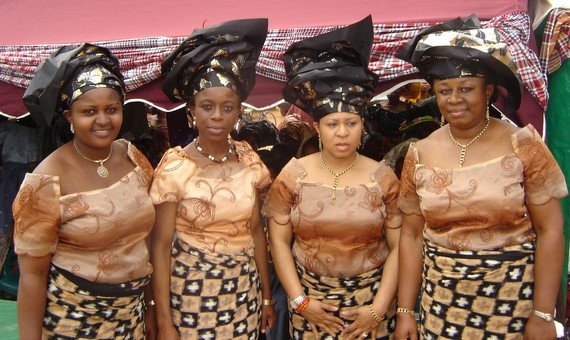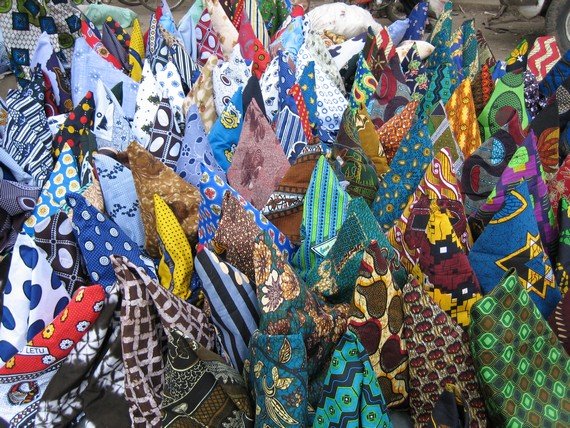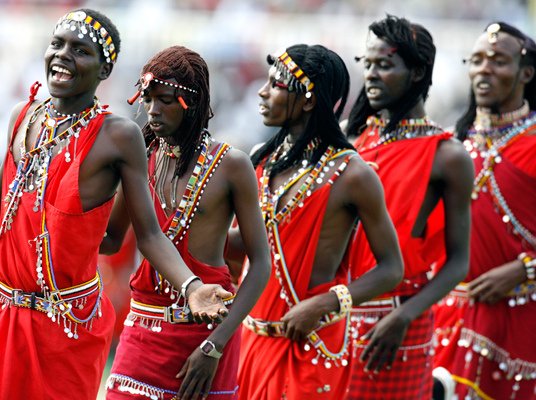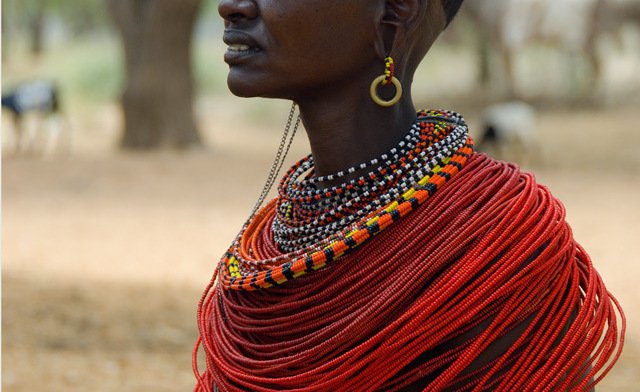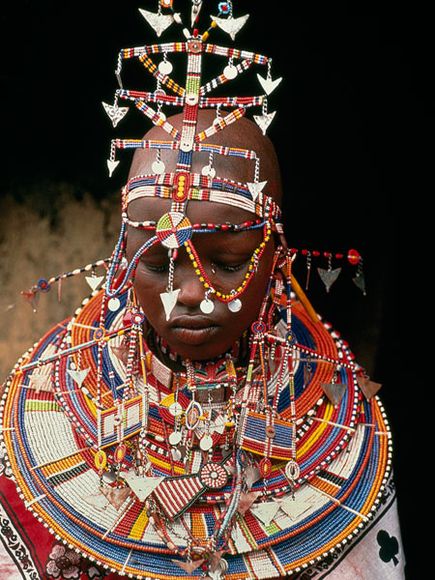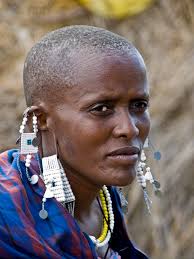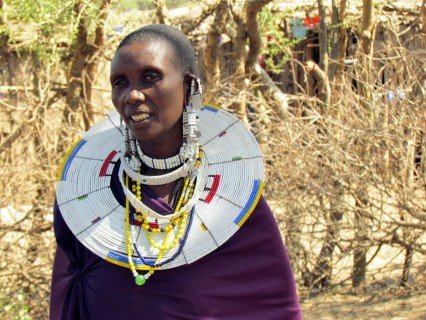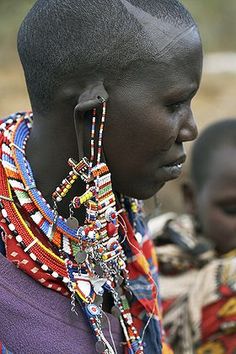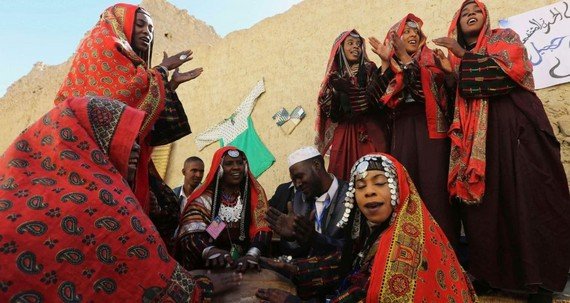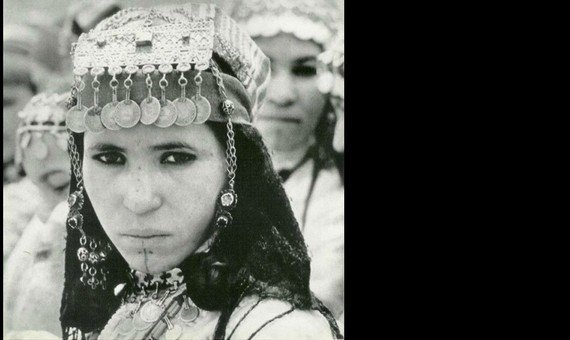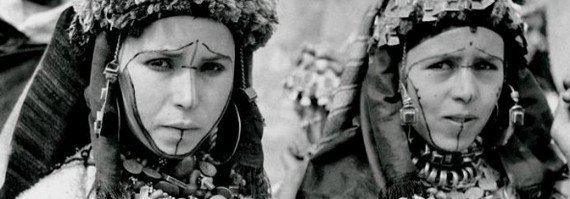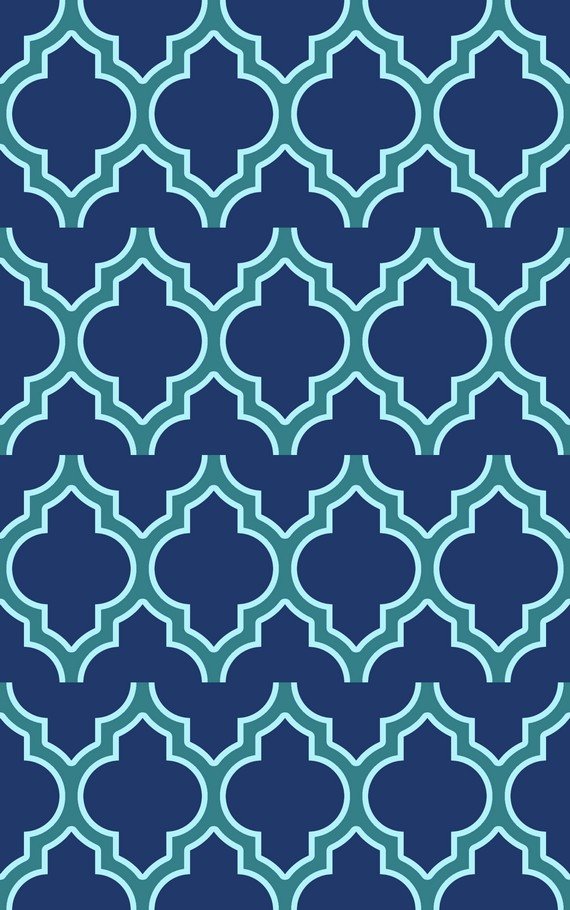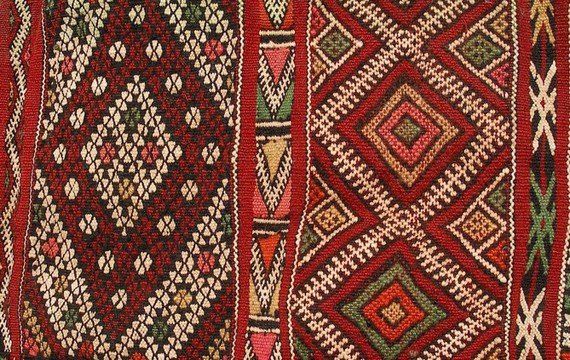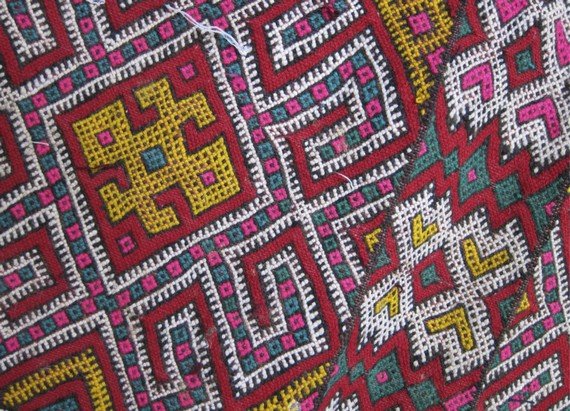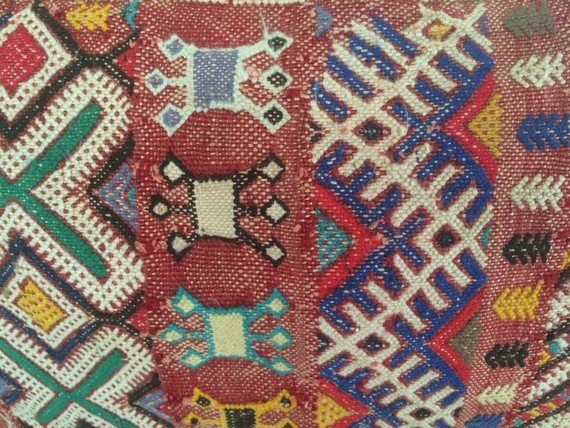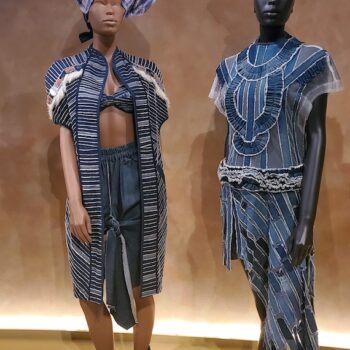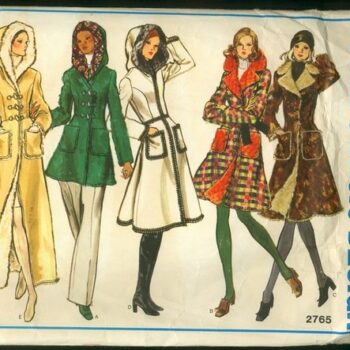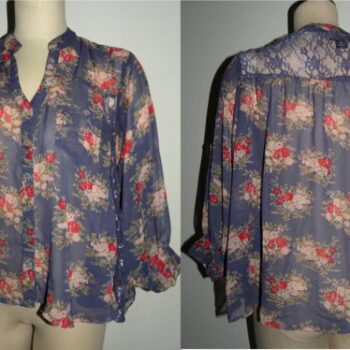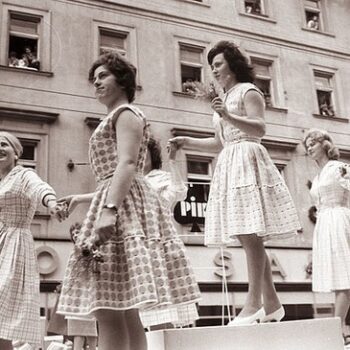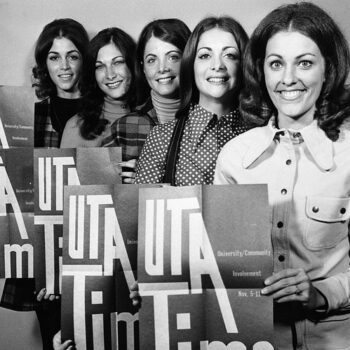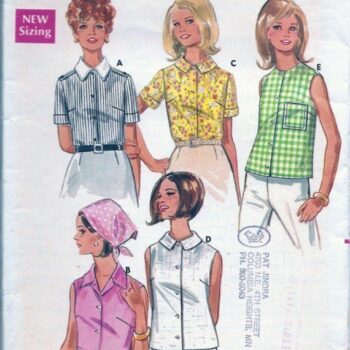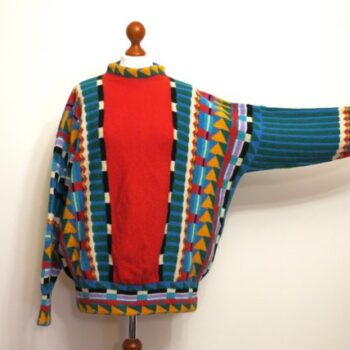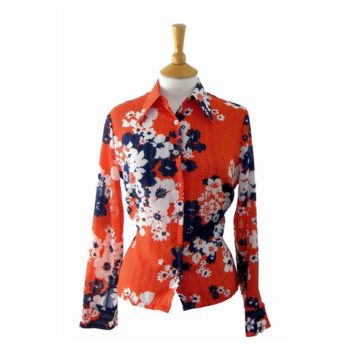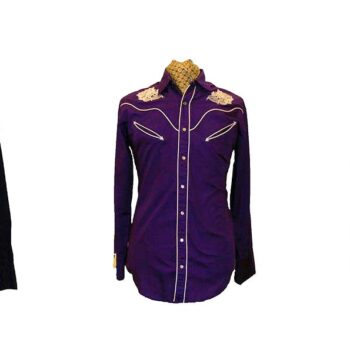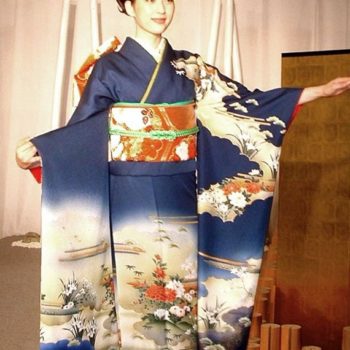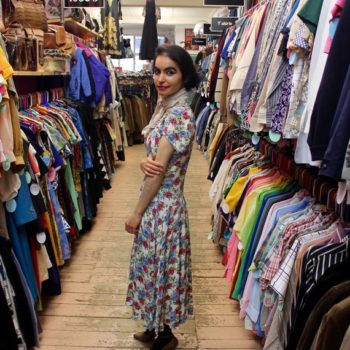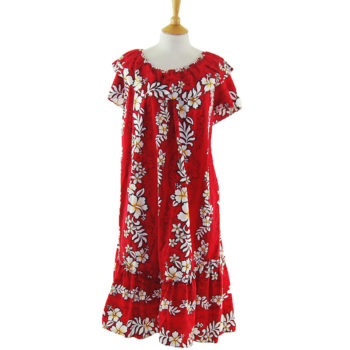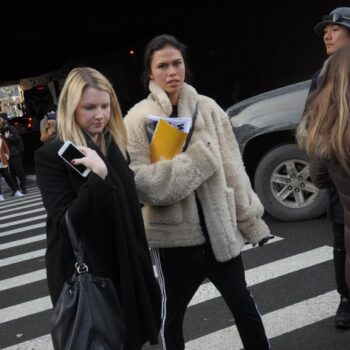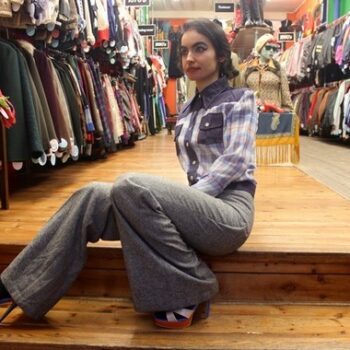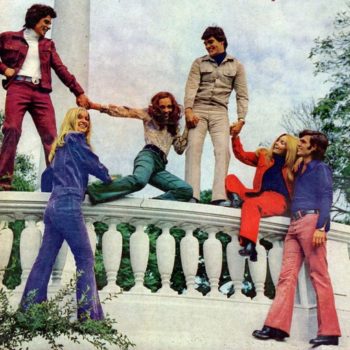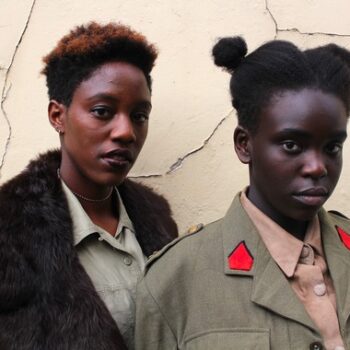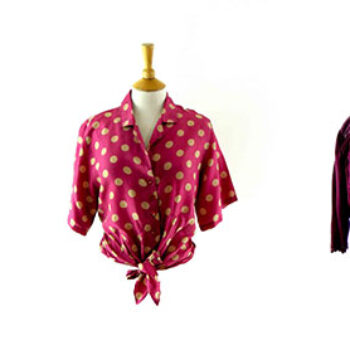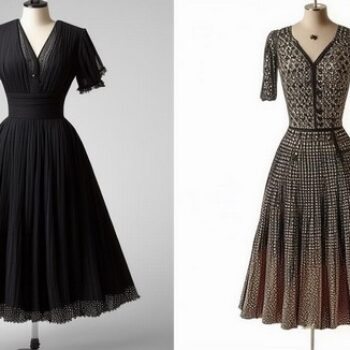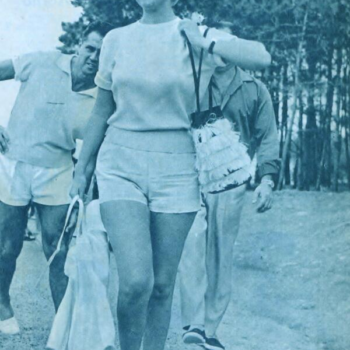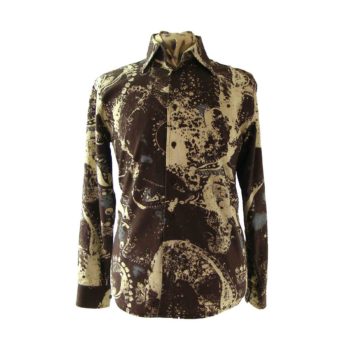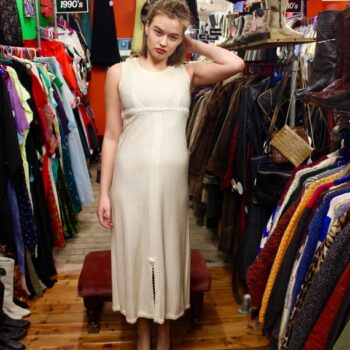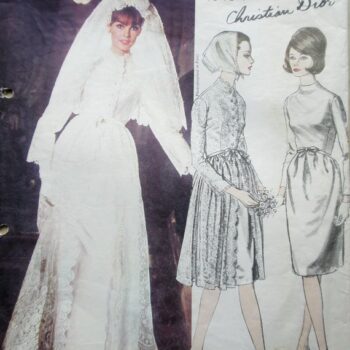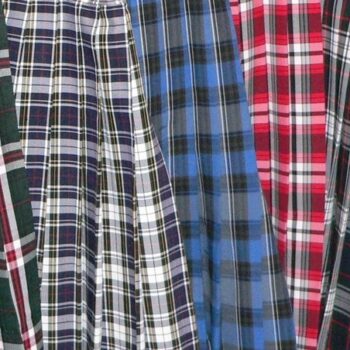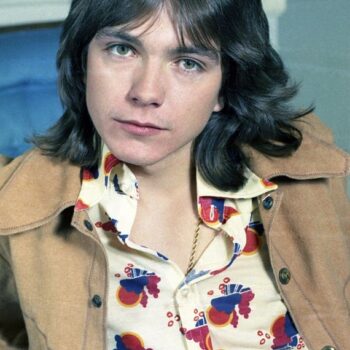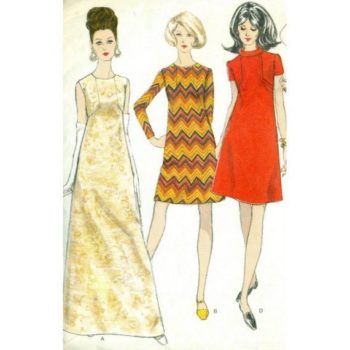Ethnic Tribal dress
October 28, 2014There doesn’t seem to be a season go by each year when ethnic tribal dress has not had a fashion moment, giving a clear indication that designers are still influenced by African, Indonesian and North American dress. From 2009 onwards the catwalks have been adorned with the colourful and vibrant prints that have taken their inspiration from across the globe.
Ethnic tribal dress and its influences on modern fashion
Incorporating other more diverse cultures into modern western fashion can transform an outfit and give an interesting look to a potentially dull outfit.
Always in fashion
Back in 2009 ethnic and tribal dress fashion was being incorporated into what was described as a more “romantic” vibe and then it seemed as if every year was a tribal, ethnic year, with the same exotic prints and patterns. In the spring and summer of 2012 it was predicted that there’d be plenty of this ethnic and tribal dress influence, for those that had not had enough of it yet, with patterns and colours worked into western garments. Prints and weaves were popular for both men and women with foreign motifs, and a zeal for ethnic and tribal accessories fully embraced.
Again in the spring and summer of 2013 the ethnic and tribal vibe was felt again with bright colours, feathers and beads with playful graphics. The spring of this year (2014) saw the global vibe on the catwalk again, with exotic embellishments, imaginative embroidery, Aztec jewellery and draping garments with graphic prints.
When did it all start?
It’s hard to pinpoint exactly when this tribal and ethnic fashion started to permeate modern fashion in the west, it’s easy to assume it was the sixties and the exciting prints that were being used with fabric, coupled with more daring colourful accessories, tribal prints with matching headscarves, brightly coloured maxis with geometric and graphic prints with draping fabrics. This was a complete opposite to the austerity of the 50s and early sixties that had gone before.
1920s ethnic and tribal influences
However, the twenties saw a its share of ethnic and tribal influences during a period known as Orientalism, with Japonism being a form of dress that encapsulated Japanese influence on Western dress. There were colourful fabrics with bold geometrics and graphics on dresses and kimono type garments with beautiful motifs and colours.
Once these influences had arrived they were here to stay. Cheaper and more accessible travel had opened up the world, particularly in the sixties and people were now more aware of what the rest of the world was like, they could see there were interesting countries out there, with their own fashion vibe going on.
Ethnic tribal influences from the 1970s – 1990s
The seventies were still in love with ethnic and tribal dress, with the eighties still embracing bright colours if not the prints and graphics that went with them. The eighties were all about block colours, padded shoulders and the ostentatious dressing of Dynasty and Dallas, with the New Romantics and the dregs of punk flooding the early to mid-eighties.
Step forward to the 1990s with designers such as John Galliano, Dries van Noten and Christian Lacroix taking their inspiration from a variety of different continents such as Africa, Native Americaand Asia, it was clear that the influence on western fashion exerted by ethnic tribal elements were embedded in fashion permanently and were always going to find their way into the closets of both men and women.
High end luxury fashion had always had a “foreign” element to it, seemingly exotic to more conservative western tastes – the more expensive it was the more likely it was to have come from “abroad,” and not just ethnic or tribal, but eastern and western Europe and those folksy peasant elements with a story behind every pattern. Anything from abroad, before travel became ubiquitous for all, was seen as something exotic and exciting.
What is ethnic tribal dress?
Returning to ethnic and tribal fashion – there is a particular vagueness to the title “ethnic and tribal” and it isn’t helped even when you use the words African, Asian or North American instead, as it adds to the dilution of influences. For when you suggest something has an African vibe, what are you talking about, Nigerian, Ghanian, Ethiopian – all these African countries will carry their own fashion influences and without a definite idea of which African country it takes its inspiration from, or the period from which they comes, it’s difficult to give credit where it’s due, to the country, and to the African designers that created them.
The same goes for Asian or North American. Surely North American tribes are all different, which tribe influences which look? A too generic description of ethnic and tribal fashion may sometimes do a disservice to the country/tribal influences its originally come from.
A noble history
Having realised that ethnic and tribal fashion has such a noble history throughout fashion history, going as far back as the twenties – it is easy to see how it has had a positive impact on western fashion. The colours, prints and patterns are a world away from western style and add a vibrancy and buoyancy that gives life to any outfit. Accessories such as a brightly beaded necklace or feather earrings can lift a shirt or tee, giving life to an otherwise boring outfit.
Do you have something ethnic or tribal?
It is more than likely you have something in your wardrobe or closet that has ethnic or tribal influences and it’s more than likely you can find something vintage along those lines. Sixties and seventies will be a treasure trove for vintage ethnic prints, with maxi dresses, shirts and headscarves in colourful patterns and accessories that embody a tribal influence, with brightly coloured beads and feathers. If you’re inspired by the ethnic and tribal dress vibe then keep an eye out – it shouldn’t be difficult, they won’t be hard to see.
Ethnic tribal dress influences in fashion are a much neglected topic. Add to the fact that ‘ethnic and tribal influence’ is itself a rather vague and ambiguous phrase and it doesn’t help.
Ideas that have derived from this kind of influence have probably originated from a particular country, after which they are amalgamated into other more western styles and trends to create a supposedly different contemporary look, but really, the African influences are clear to see.
Ethnic tribal dress in modern fashion
Ethnic tribal dress Origins
This is fine, but those countries/designers that have contributed these ideas, the country they originated from,are given no credit and this is a shame. When was the last time you heard a Nigerian or Ugandan fashion designer mentioned at a London, New York or Paris catwalk show?
I’m not a fashion expert, but I can’t remember when I’ve seen African influences acknowledged back to their country of origin, or heard someone mention any past African designers they may have got their ideas from.
I’m not the only one to have mentioned this, as there are one or two other writers who’ve put their heads above the trenches and written about this too. However, this blog will hopefully shed light on some of the wonderful African influences in ethnic-tribal dress and trace them back to their place of origin.
This blog then is the beginning of a short series looking at ethnic tribal dress, and will focus on up to 3 African influences.
I will also make an attempt to trace back when these influences began permeating western dress, it has been touched on before briefly, but we will look at it a little deeper. We can go as far back at least, to the early 1920s, when travel was becoming more widely available.
Hopefully, towards the end of the series, we can also see where African influences can be sourced, hopefully vintage, and there are going to be certain pieces that have been influenced by African fashion in the 60s, 70s and 80s.
Ethnic tribal dress-Nigeria
Nigeria, an African nation that may be older than one once thought, was under British colonial power from 1914 onwards and gained independence in 1960. The name comes from the Niger River and the word niger is Latin for black. It also has the largest population in the African region.
Woven fibres found their way into Nigeria in the early 800s before cotton processing and simple fabric shapes were wound around the body, shoulders and arm so it could be fastened around the waist.
The traditional ideas of how a Nigerian woman would dress are still largely with us, but their influences are still beautiful, simple and easy to modernise, which explains their popularity. Fabrics are so beautifully designed and infused with colour that it’s no wonder they are so sought after. We’re talking lace, adire, Ankara with bold prints and shapes.
Skirts that are simple pieces of fabric tied around the waist known as “Iros” are still seen today as part of beachwear and summer trends. A “gele” which is a scarf tied around the head in different shapes, is perhaps not so widely worn by white western women, but is certainly something that’s been seen on the catwalks.
Nigerian fashion starts to make itself seen and heard
Nigerian fashion has come a long way and its first fashion show was held in 1997 and it is now held every year. Of course fashion has always been around in Nigeria, but its ability to generate an income from it has only been in the mid part of the 20th century onwards.
What Nigeria also has is a number of people who have dressmaking skills and are able to make their own clothes – this is a skill they can only benefit from in the long-term, by sourcing local dressmakers and their own materials.
Ethnic tribal dress-Dutch wax prints
Some of the fabric designs originating from say, Nigeria and Africa aren’t necessarily from Africa, notably they are Dutch wax resin-printed fabrics.There is a complex history here, and it isn’t simple enough to suggest they’re either Dutch or African either.
They could possibly have quite an eclectic cultural background as has been discovered by further research.
Wax resist dying has been used as far afield as Indonesia, and the bold colours and patterns have been found on the western fashion runways, with complex motifs and deliciously bright colourful backgrounds.
There are certain imperfections in their final creation, but in the early part of the 19th century the West Africans found they liked it as opposed to the Indonesians.
It would appear that these imperfections are even still deliberately placed in printing of fabrics by the Dutch themselves, even though there are mechanical solutions that have been developed over the years to conquer this problem.
Ethnic tribal dress-Popular West African fabrics
Pop stars as well-known as Gwen Stefani and film actresses in the public eye have been known to wear these strong fabrics in some western concoctions, with modern influences, and they’ve graced the collections of high street chains such as H&M and Burberry Prorsum catwalks back in 2011. In fact, African influences in fashion have never gone away in the past 3 to 4 years.
Ethnic tribal dress-Fashion designers
There are more Nigerian fashion designers creating modern trends of their own using traditional Nigerian fabric designs to make both Western and African women’s wear.
There are still certain hurdles in the way of Nigeria having a thriving fashion industry of its own however, and some of these are securing a reliable electricity supply and having their own chain of high street stores in Nigeria itself.
Nigerian fashion designers in the UK
Nigerian fashion designers with their own brands to look out for in the UK are, Ade Bakare who designs classic pieces with a modern twist, perhaps not with a more traditional Nigerian touch, but he has done much to support fashion design in Nigeria itself, by staging design competitions for budding new designers. He’s been in the business since the early nineties.
Look out also for Virgos lounge created by Nike Ajanaku, OyeyemiWemi-Akinsola and FioyeAkinsola, apparently they all share the same zodiac sign, hence the title of their brand.
They are known for creating distinctive modern clothes for a more youth orientated followers of fashion.
Finally, Obsidian and launched back in 2009 we have Isoken Ogiemwonyi. This is a brand that creates classic pieces that would look good on any woman with gorgeous prints and colours.
Again, not necessarily traditional Nigerian, but a new aesthetic bringing Nigerian fashion into the 21st century.
If you fancy looking up these designers then go take a look, if you want more traditional African prints – that aren’t perhaps available anywhere else, then have a look on the internet. You can also source African Dutch waxfabrics here https://www.metrotextiles.co.uk/?gclid=CPy1lfmyxcECFdLKtAodr3sANQ.
Also, try sourcing vintage 60s and 70s clothes for some African ethnic tribal dress influences (yes vague I know), but there are some gorgeous colours and prints around at this time that were influenced by African fabrics. Emilio Pucci, big in the 60s and 70s was strongly influenced by African colours and patterns.
Further reading:
https://medium.com/culture-clash/tribal-is-a-fashion-fail-6e07a359b6c3
Ethnic and tribal dress and its influences in modern fashion
Kenya
In Kenya there is no distinct Kenyan style, and this may be down to the fact that in Kenya there are nearly 100 different tribes with their own distinctive traditional form of dress. The majority of Kenyans today dress in western clothes, while there are still tribes who dress more traditionally. One of these is the well-known Maasai Mara, who are probably one of the most famous tribes known outside of Kenya.
Maasai Mara
The Maasai look is certainly striking in appearance and no doubt it’s had an impact on western fashion, from the red-checked Maasai blanket to the red clothing(a sign of power), to the ochre and fat dyed red hair.
It’s clear to see where some of forms of dress from the Maasai tribe have filtered through to western fashion. Global fashion is a melting pot of different ideas and the heavy thick round necklaces, red dominated patterned fabrics seen on the catwalks over the years, gives a strong indication that a lot of tribal influences have come from these tribes.
Tribal and Western
Kenyan designers themselves are influenced by both western dress as well as African and will often combine the two, just as we do in the West. You can easily emulate African styles and combine them with Western dress, without having to buy into a specifically designed high street creation. Look to second hand and vintage stores for unique brightly coloured fabrics. Create simple skirts out of sarongs, and any left-over fabric can be used to create a headscarf, perfect in the summer.
There are plenty of African influenced jewellery out there, look for round necks similar in shape to the Maasai warriors, but naturally smaller, with bronze, silver or gold, or bold colourful patterns, perhaps beaded.
Remember, for the Maasai warrior red means power, and you need confidence to wear it. Mix it with patterns and different backgrounds, white or black is good. Red check is the Maasai Mara tribal blanket worn over the shoulders – check is in right now, so look for colours that closely resemble this.
Finally, enjoy it, there are some beautiful tribal influences from Africa, but it’s good to put a name to it, and the Maasai are one of the most colourful and culturally fascinating tribes in Kenya.
With a little imagination and by sourcing authentic fabrics you can create ethnic tribal dress looks that are your own original creations, without buying into other people’s interpretations of African influences. The more effort you put into your own look, the more original and unique it’ll be.
North African ethnic tribal dress influences
In this final part, we’re looking at the influence of North African ethnic and tribal dress influences on the West.
North Africa – geography and culture
This is certainly a fascinating part of the world, not least because it has undergone so many political divisions, colonial occupation and dynamic changes over the past few hundred years, language imposition and curtailment of personal freedoms. It’s what makes North Africa so fascinating, both culturally and geographically.
If you’re unsure of the geographical area of North Africa, then here is a quick reminder: North Africa consists of Libya, Tunisia, Algeria, Morocco and finally, Egypt.
So many different influences
As there are so many European as well as ethnic tribal dress influences in North Africa (Berba tribes being one), many parts of North Africa have become a melting pot of cultural influences intermingling, criss-crossing each other and fusing to create fascinating cultural diversity consisting of Berba tribes, Spanish, Portuguese, French and English colonists, all with their own cultures.
Patterns, colours and fabrics
Patterns are fundamentally important, as they are symbolic of particular messages as well as providing a colourful palette for the wearer. Patterns can tell the story of religion, war, trade and environmental disasters. Shapes and patterns are used as metaphors to tell a tale of language, liberty and warfare. The evil eye, an ever present danger, is warded off by combs to pierce the eye, birds and trees and other creatures of nature to ward off evil, keeping it at a safe distance.
Travel and influence
North African palettes, patterns and fabrics have filtered into Western fashion for the past 100 years at least, from those rich enough to travel and when travel became easier and more accessible for all.
North African Influences
North African Influences 2
North African ethnic tribal dress has graced the catwalks often, and more recently this year in New York during fashion week. The fashion duo Nicholas K showed off North African influences with loose trousers, shawls worn either at the waist or shoulder, and draped necklines matched by twisted hijabs on the head, giving a truly North African feel with hippy undertones.
Technological advances
In fact, North African patterned fabrics are so desirable right now, that technology is working hard to emulate the complicated designs. Technology may not be able reproduce these authentic patterns exactly, as traditionally these fabrics were spun, woven, using old weaving techniques passed down from one generation to another. Can they be ever as good using new, more sophisticated techniques?
They may not be able to capture the raw essence of North African culture, but as a fashion statement you’ll never make a more dramatic entrance.
Along with statement jewellery, Fatima hands, evil eyes, colourful beads and carefully draped shawls and headdresses, the look is dramatic and mysterious.
Vintage fabrics for an authentic ethnic tribal dress look
If you’re looking to emulate a ethnic tribal dress with a North African look then keep an eye out for unusual fabrics, 1970s maxi dresses for a bohemian, hippy look, with bright colours, mixed to form flower silhouettes and fleur de lis shadows, stripes and geometric shapes. Look out for vintage fabric pieces and drape imaginatively to create sarong type skirts or pashminas. You don’t have to be an accomplished dressmaker to create something with a North African feel, loose fabrics and statement jewellery can be enough.
jean-paul-gaultier-summer-2010
tribal-givenchy
Christian Lacroix at Couture Fall 2003
frida-vogue-1937
Africa Fashion Week London
Bettina mcilwraith-stylist floral appreciation society
Ade Bakare Couture
Obsidian 2011 MTN Lagos Fashion & Design Week
New African Fashion
gele
nigeria fashion week 2012
Vliscomodel
vlisco02
vlisco batik
burberry-prorsum-05
Ade Bakare Haute Fashion Africa
NORA ARAKAKI
virgos-lounge-dress-clockstrikes-vintage-jumper_400
Obsidian
emilio pucci 2
Maasai inspired
GwenStephani-LAMB
tribe-attack
Maasai influences
Jebel Nafusa Berber woman
Berber shawl
Moroccan Berber Amazigh Woman
moroccan jewels
best-of-nyfw-nicholas-k
Nicholas_K_spring_summer_2015_collection_New_York_Fashion_Week2
Nicholas-Kspring-summer-2015-collection-new-york-fashion-week-menswears-womenswear-glamour-boys-inc 007
Berber Tattoo
Berber Ring Ornament
berber_braclets_jewelry
Berber bojangles



